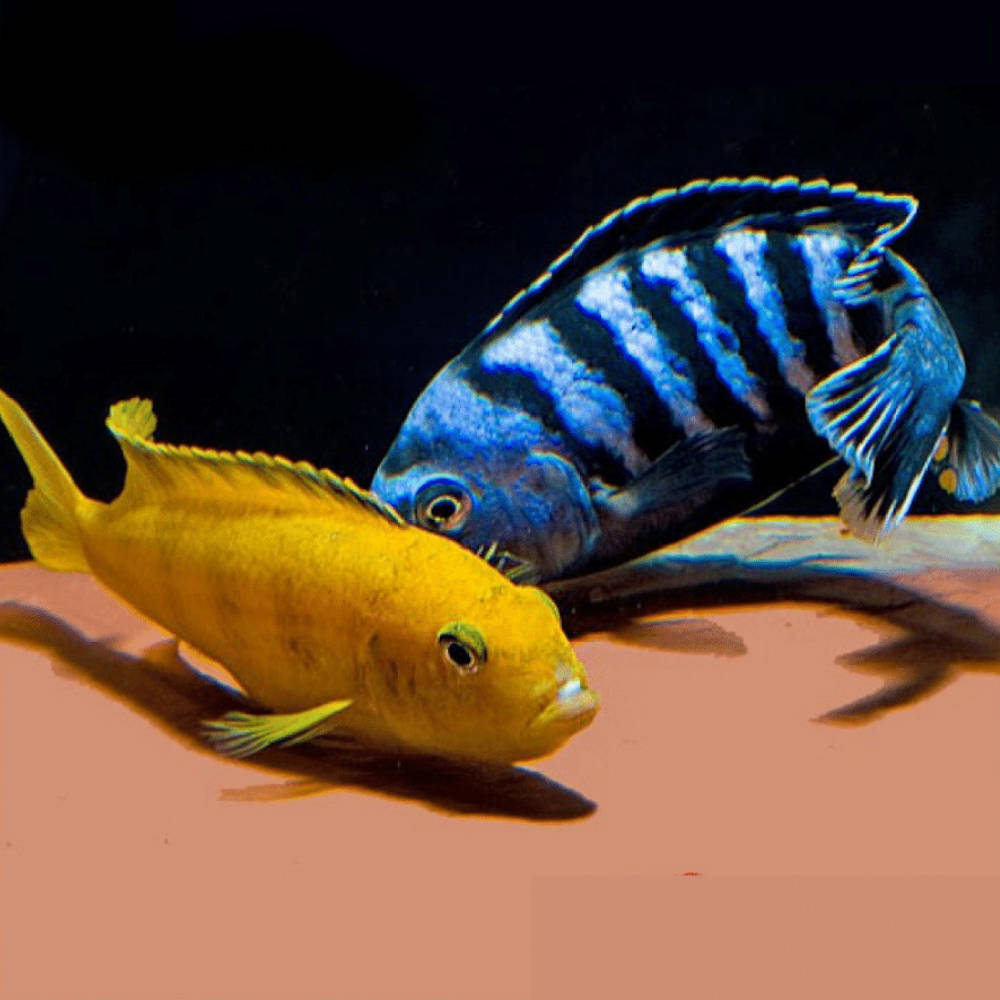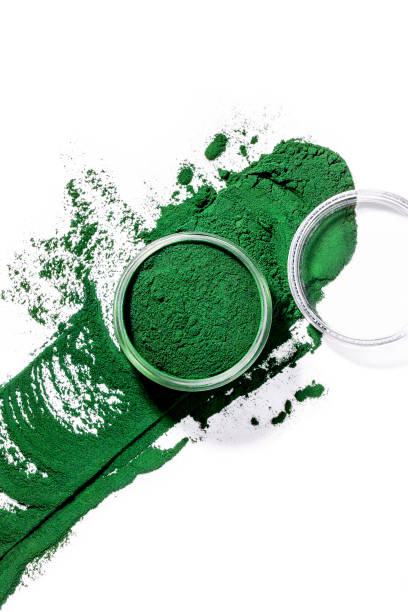Your one-stop shop for everything Pseudotropheus saulosi, including health care, habitat creation, compatible tank mates, identification, breeding and much on these beautiful Mbuna cichlids.

Have you seen the bright and colorful Lake Malawi fish and want to add it to your aquarium?
Then you’ve made a good choice, but your decision does not end there.
In this Mbuna cichlid overview, you will see that there is more to Pseudotropheus saulosi care than meets the eye. It’s a good thing that you’re here. This overview covers every point of Mbuna cichlid care, starting with identification.
See Also: 10 Types of Colorful African Cichlids
Striking Color Variations in Pseudotropheus saulosi
This species has unique Lake Malawi fish traits that’ll have your guests doing a double take at your tank. That’s why identifying Mbuna cichlids is easy, but you may miss it if you don’t know what you’re searching for. So, I’ve made it easy for you.
Two things to identify are the color pattern and the unique traits.
Color Pattern
The distinct Pseudotropheus saulosi appearance helps you separate males from females.
How? You may ask.

I’ll save you the suspense and reveal the secret now! Males are dark blue with vertical stripes, while the females and fry are a vibrant yellow with faint stripes.
Unique Traits
Although Pseudotropheus saulosi share territorial traits with other Lake Malawi fish, they’re not as aggressive. So you’ll enjoy having them in a community tank.
Setting Up the Ideal Habitat for Pseudotropheus saulosi
Your ideal Pseudotropheus saulosi tank setup should be a mini replica of its natural habitat if you want the best environment and living conditions.
Tank Size and Layout
Because Pseudotropheus saulosi grows about 8-10 cm long at full maturity, use a 40-gallon rectangular tank per four fishes. Long tanks allow them to swim comfortably without hurting their fins.
Water Conditions
Set these parameters to recreate a natural habitat for Mbuna cichlids in the tank.
| Temperature | 75 – 82℉ |
| pH Level | 7.8 – 8.6 (High Alkaline) |
| Hardness | 10 – 20dGH (Moderately hard to Hard) |
Decor and Substrates
To complete the natural habitat setup, you must use only suitable aquarium decor for all types of cichlids. Use rocky substrates instead of sand; add caves and live plants to create hiding spots for your pets.
Dietary Requirements of Pseudotropheus saulosi

Pseudotropheus saulosi is a herbivorous aquarium fish that feeds on only plant matter. I can see the wheels turning in your head as you wonder about their need for complete nutrition if they have a strict plant-based diet.
Diet Suggestions
In their natural habitat, they forage for algae, but you can replace that with spirulina, algae flakes, and fresh vegetables. Add high-quality commercial flakes specially made for the Mbuna cichlid diet to provide your pets with a balanced diet.
See Also: 7 Common types of freshwater aquarium algae
Feeding Tips
Follow a strict routine when feeding Pseudotropheus saulosi to avoid overfeeding, stress, and water contamination from leftovers. Give them only portions they can finish in 2-3 minutes about twice daily.
For more on feeding your aquatic pets check out The Ultimate Guide to Fish Food: Pros and Cons & Best Choices!
How to Breed Pseudotropheus saulosi Successfully
Breeding Pseudotropheus saulosi isn’t like other common cichlids because the females have a unique means of incubating their fertilized eggs in their mouths. So, they’re called mouthbrooders.

Follow these mouthbrooding cichlid tips to get the best of your Lake Malawi fish:
| Temperature | 77 – 81℉ |
| pH level | 7.8 – 8.6 |
| Hardness | Moderate to hard |
| Decor | Caves and Flat Surfaces |
| Breeders | 1 male | 3 females |
| Diet | Add treats like small daphnia and baby brine shrimp |
Spawning
The females lay their eggs on a flat surface and then incubate them in their mouths. They nibble at the males’s anal fin for fertilization of the incubated eggs. Mouthbrooding lasts 21-28 days, after which the eggs will hatch, and the mothers release the fry into the water.
Raising Mbuna Fry
Free-swimming fry can only eat finely crushed food like powdered spirulina, flakes and even baby brine shrimp. Perform frequent water changes of 20-30% every week until the Mbuna fry becomes adults.
Separate large fry from small ones as they grow, and then reintegrate mature Mbuna cichlids into the community tank.
We’re almost done with the overview, so hang on a little longer.
Compatible Tank Mates for Pseudotropheus saulosi
You must choose the right tank mates for Pseudotropheus saulosi to give your pet the best living conditions.
When selecting compatible species, you may choose another Mbuna variant for a peaceful Mbuna community or mix your pets with other water swellers.
Compatible Species
- Mbuna Species like Cynotilapia Afra, Yellow Lab, and Maingano
- Synodontis catfish
Remember that compatible Lake Malawi fish will survive in the same conditions as your pets.
Avoided Species
- Larger cichlids like Tyrannochromis and Pseudotopheus crabro.
- Delicate species incompatible with Pseudotropheus saulosi living condition
Preventing Health Issues in Pseudotropheus saulosi
This hardy fish rarely gets sick, but ignoring Pseudotropheus saulosi’s healthcare needs will spell doom for your pets. First, you can adopt specific practices for preventing Mbuna Cichlid diseases and then learn how to treat ailments.
Preventative Measures
The good news is that you’re on the right track if you follow the healthy Lake Malawi cichlid tips I’ve shared from the beginning of this overview.
Here’s a quick look at preventive measures in case you’re lost:
- Set an ideal habitat
- Provide an adequate diet
- Quarantine new fish and
- Choose compatible tank mates
Signs of Illness
The following are signs of illnesses your pets may face, as well as their symptoms, causes, and treatments.
| Signs | Illness | Cause | Treatment |
| Swollen Abdomen, Laziness | Malawi Bloat | Overfeeding and poor water quality | High-fiber diet and improved water quality |
| White Spots, Scratching | Ich | Stress and Unstable Water Conditions | Increased temperature Ich Medication |
| Fraying and Discolored Fins | Fin Rot | Bacterial Infection | Improved Water Quality and Antibiotics |
Extending the Lifespan of Pseudotropheus saulosi
Pseudotropheus saulosi lifespan extends between 6-10 years under optimal health conditions. But they can die younger if you don’t invest in long-term Mbuna care.
Your best bet is to follow these healthy cichlid care tips to ensure your Pseudotropheus saulosi lives as long as possible.
Lifespan Factors
Multiple factors affect a fish’s lifespan, but the most common ones which you can control include:
- Water quality,
- Compatible tank mates,
- A balanced diet
Care Tips for Longevity
Two things you must always do – observe your pets and maintain their overall wellbeing by doing the following:
- Stabilize water parameters
- Optimize diet
- Maintain the water quality
- Reduce the stress by pairing with compatible tank mates
- Quarantine new fish
Conclusion
That is the complete Lake Malawi fish guide for you to start your aquarium with these beautiful African species.
You have all the care essentials for maintaining your pet’s vibrant colors, building the ideal tank, and creating inspired environments to highlight their beautiful scales. Use this checklist to see if you’ve understood all the colorful Mbuna cichlid tips I’ve shared here:
- Can you identify them?
- How will you house them?
- What do they eat?
- What is their health care routine?
- Which species are compatible as tank mates?
If you can answer all these questions, then you’re ready. I hope this Pseudotropheus saulosi care guide has been useful to you.


